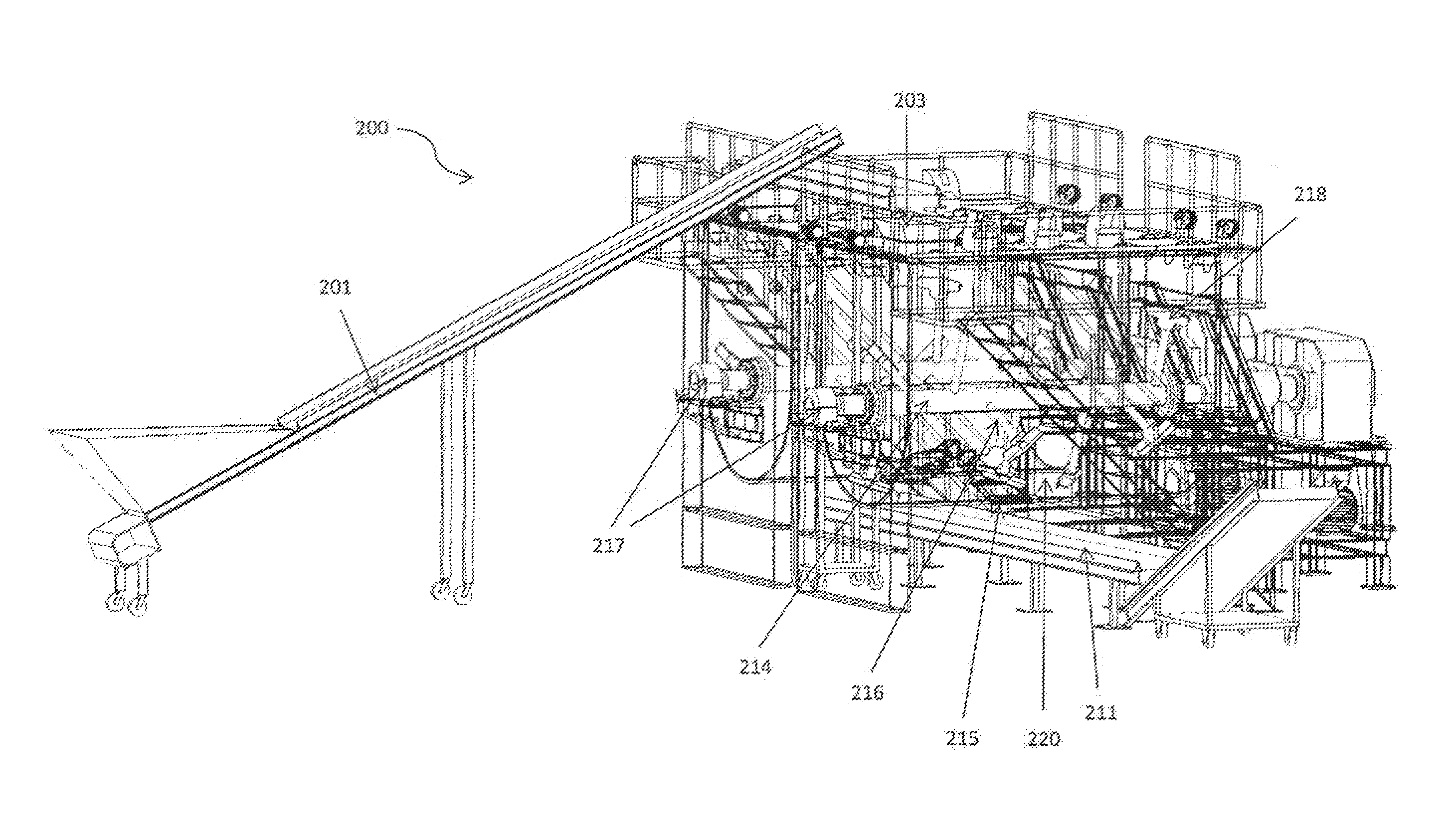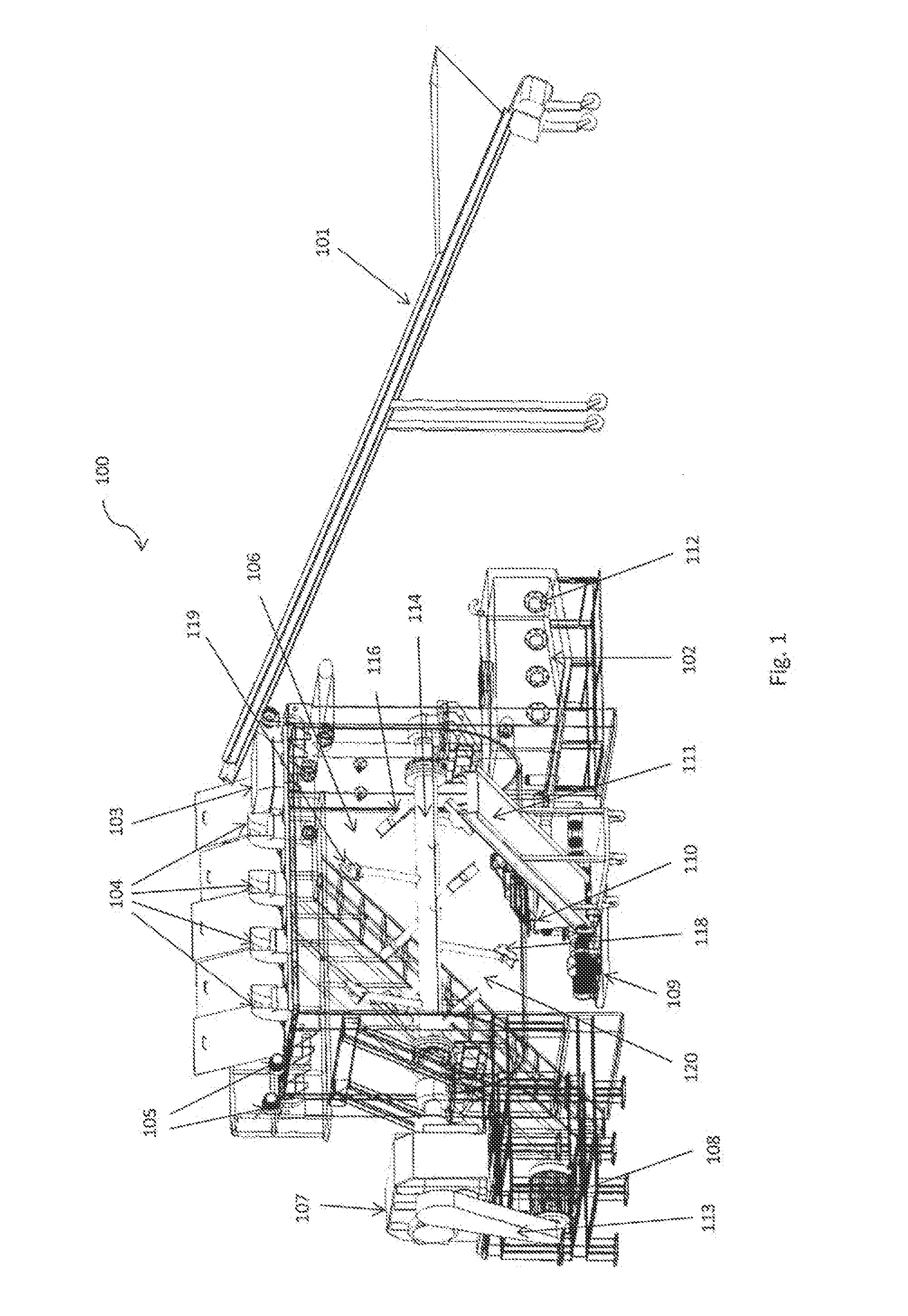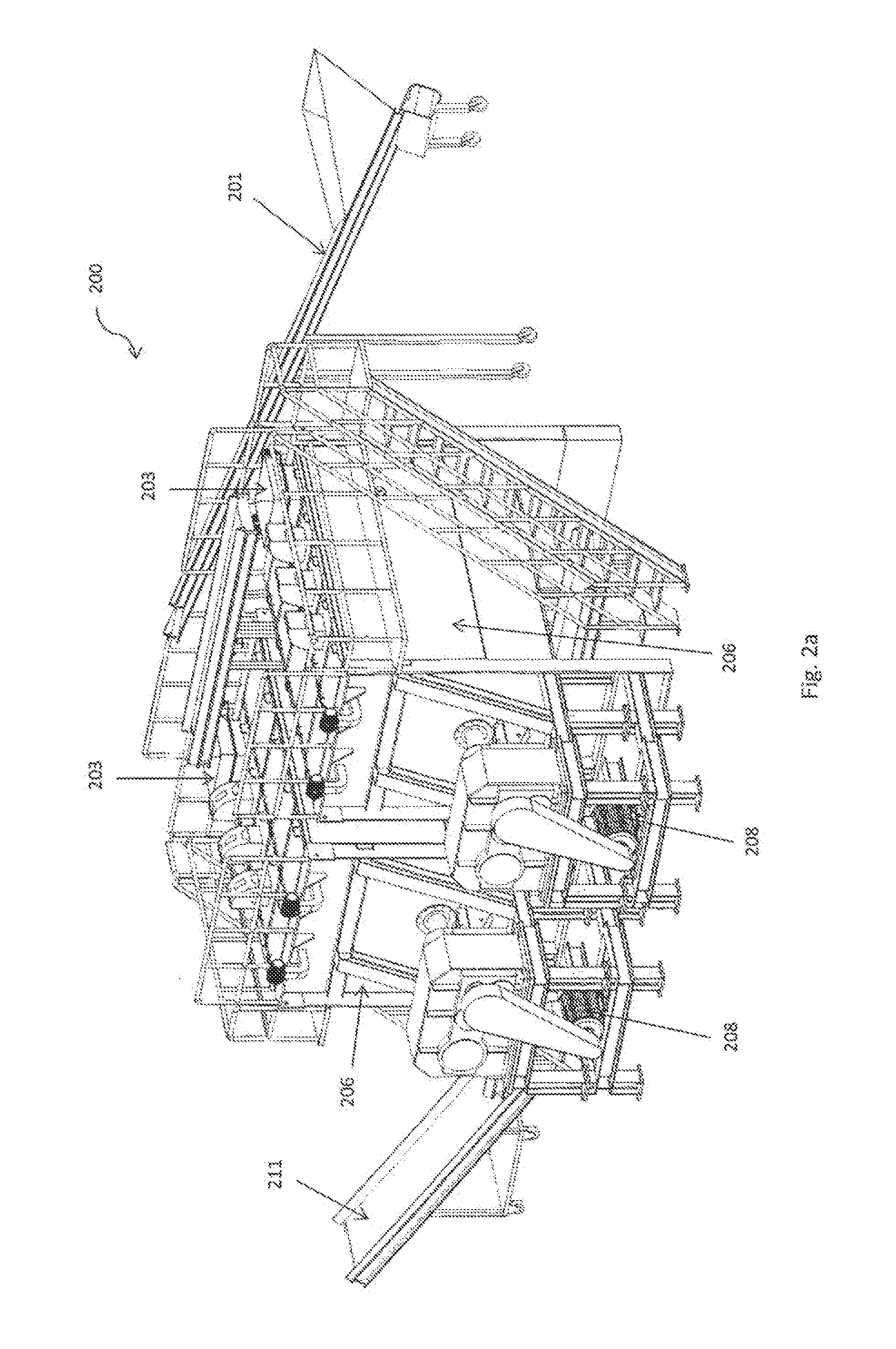Apparatus and System for Treating Organic Mass
a technology of organic material and apparatus, applied in the field of apparatus for treating organic material, can solve the problems of reducing the amount of essential elements in the final composted product, reducing the usefulness of organic fertilizers with low npk values, and reducing the commercial value of organic fertilizers, so as to reduce the foul odor, reduce the amount of throughput, and scale up the effect of composting operations
- Summary
- Abstract
- Description
- Claims
- Application Information
AI Technical Summary
Benefits of technology
Problems solved by technology
Method used
Image
Examples
Embodiment Construction
[0042]Organic mass that may be treated by the apparatus of the present invention include, but are not limited to, agricultural waste, food waste, organic refuse, mill effluent, municipal waste, sewage, sludge, animal waste, and industrial waste. Exemplary agricultural wastes include, but are not limited to, oil palm empty fruit bunch (EPB), olive husk, corn cob, coffee bean husk, rice husk, rice straw, spent mushroom compost, palm foliage, palm trunk, palm kernel shells, palm fiber, farm effluent, slaughterhouse waste, biogas sludge, wastewater sludge, leather waste, flower cuttings, spent slower compost, wheat straw, fruit waste, vegetable waste, and the like. Exemplary animal wastes include, hut are not limited to, dead animals, animal feathers, and animal manure such as poultry manure, cow manure, goat manure, horse manure, sheep manure and swine manure. Poultry manure may be chicken dung. Animal wastes may also include human sewage, Mill effluent may be, for example, palm oil mi...
PUM
| Property | Measurement | Unit |
|---|---|---|
| time | aaaaa | aaaaa |
| angle | aaaaa | aaaaa |
| angle | aaaaa | aaaaa |
Abstract
Description
Claims
Application Information
 Login to View More
Login to View More - R&D
- Intellectual Property
- Life Sciences
- Materials
- Tech Scout
- Unparalleled Data Quality
- Higher Quality Content
- 60% Fewer Hallucinations
Browse by: Latest US Patents, China's latest patents, Technical Efficacy Thesaurus, Application Domain, Technology Topic, Popular Technical Reports.
© 2025 PatSnap. All rights reserved.Legal|Privacy policy|Modern Slavery Act Transparency Statement|Sitemap|About US| Contact US: help@patsnap.com



